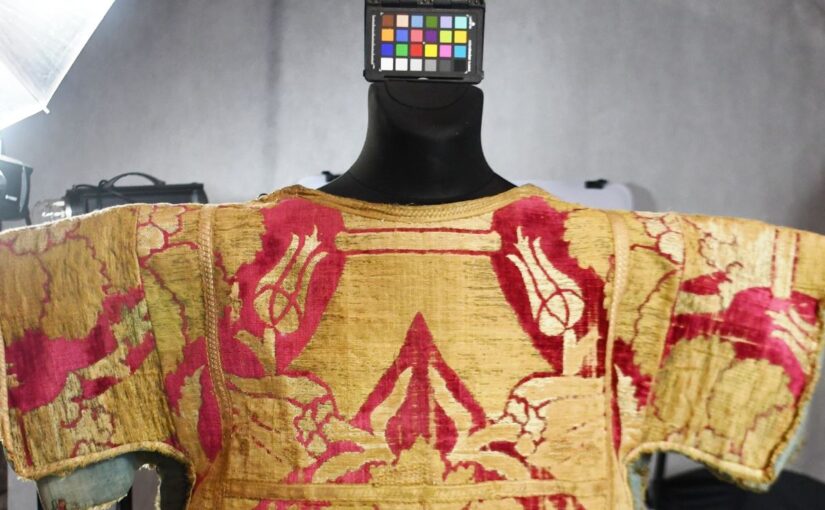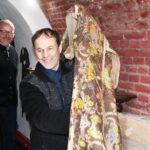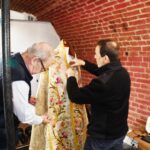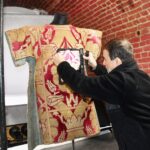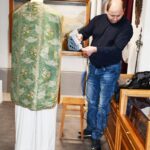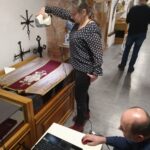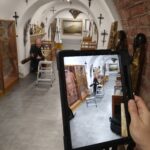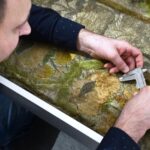In subsequent working visits in January 2024 (January 3, 16, 23 and 30, 2024), scanning was carried out of 6. chasubles, 1. dalmatic (a type of tunic worn by deacons) and 2. cope (the priest wears the cope when conducting various types of services, e.g.: litanies, rosary, funerals).
In total, the entire “Lab3D” team devoted over 65 man-hours to the process of digitizing the garments.
3D digitization of liturgical vestments was performed using several technologies: laser scanning using a terrestrial laser scanner, scanning using structured light technology (white and blue), using photogrammetry (SfM) and using the LIDAR system built into an Apple tablet. The aim of the proposed approach to 3D digitization of vestments was to conduct research on the suitability and effectiveness of individual 3D technologies for digitizing historical liturgical vestments.
The oldest digitized object was a dalmatian dating back to the end of the 15th century, the chasubles came from the 16th to the 18th century, and the copes date back to the 19th century. In total, over 110 GB of data was obtained in the form of various types of scans and several thousand photos. Project participants plan joint scientific publications in journals and conference presentations. In addition, digital 3D models will be made available to researchers (art historians, liturgists) and on the website https://polskiedziedzictwo3d.pl in an “for everyone” version.

